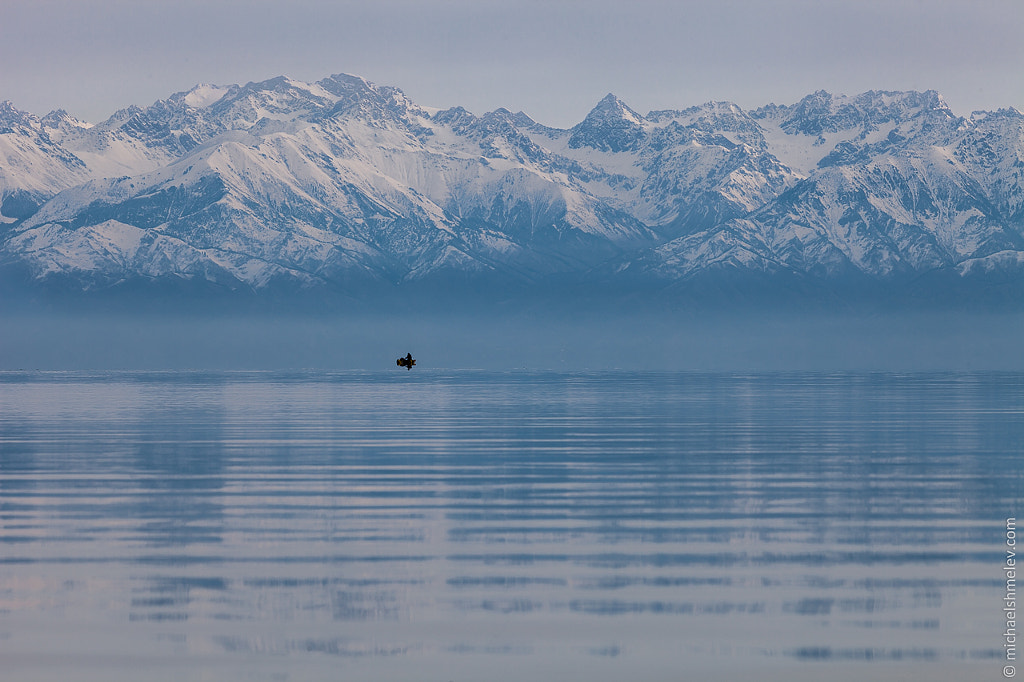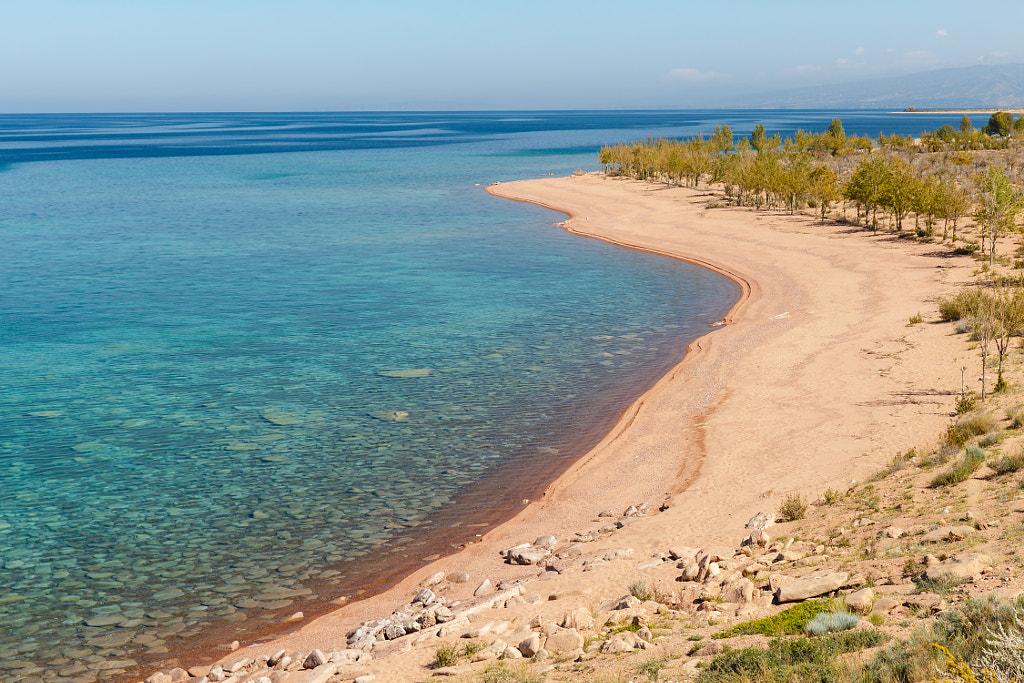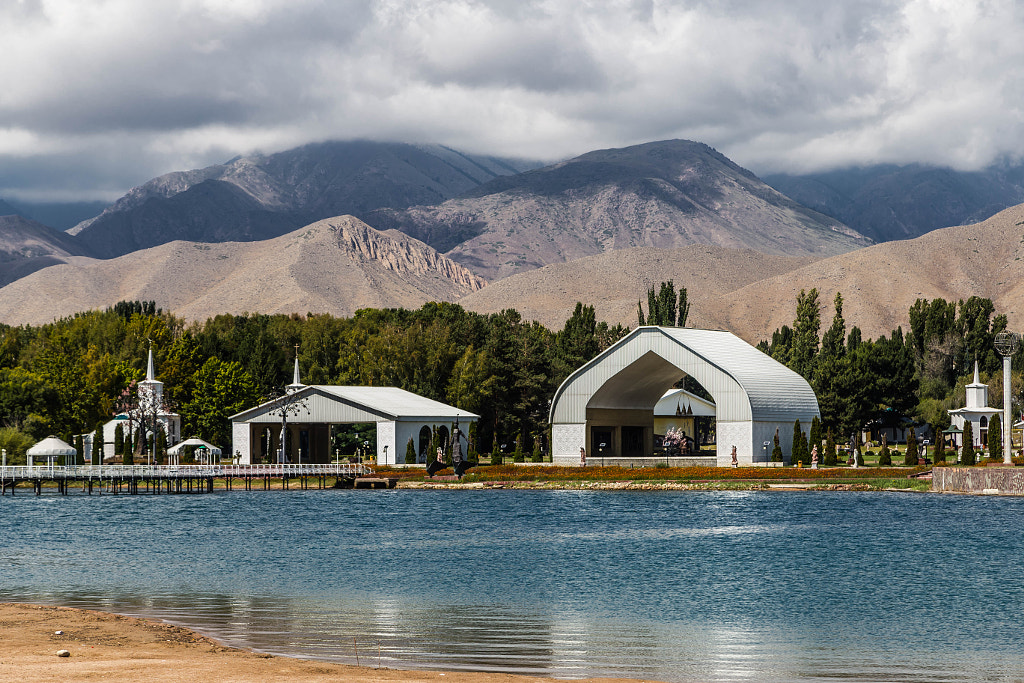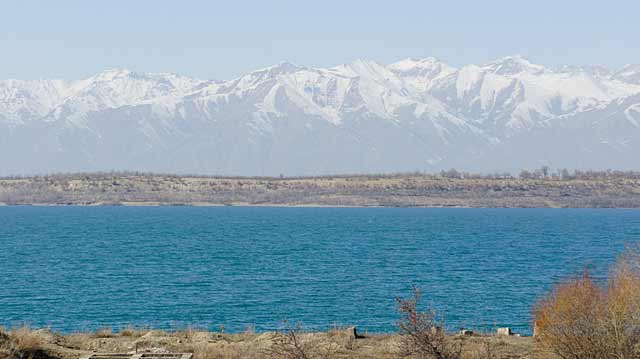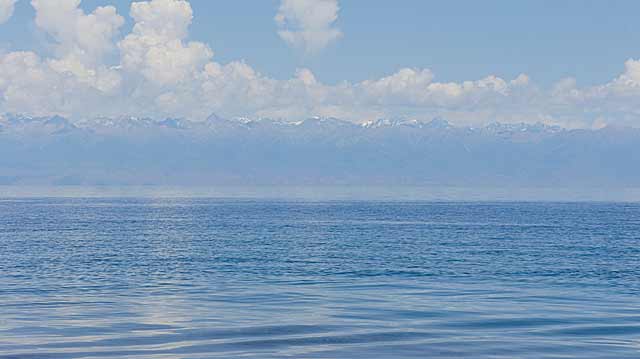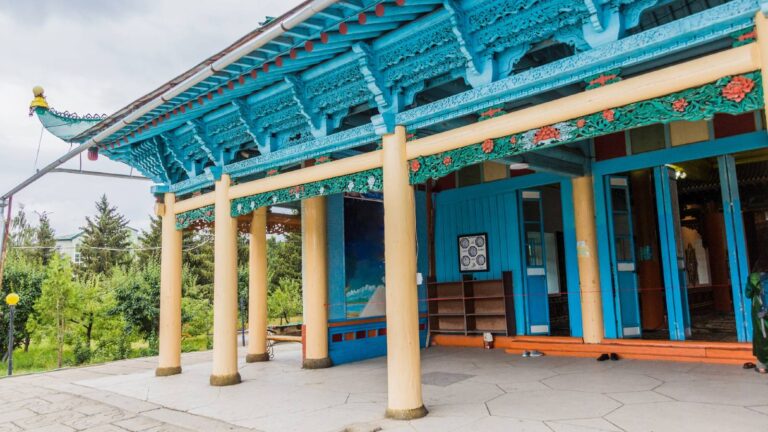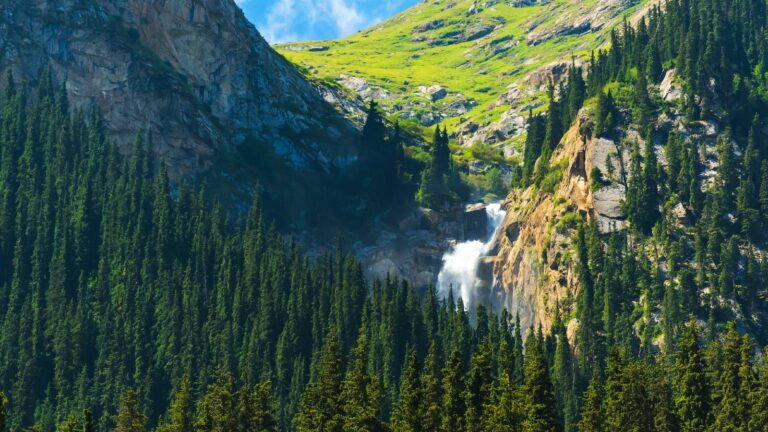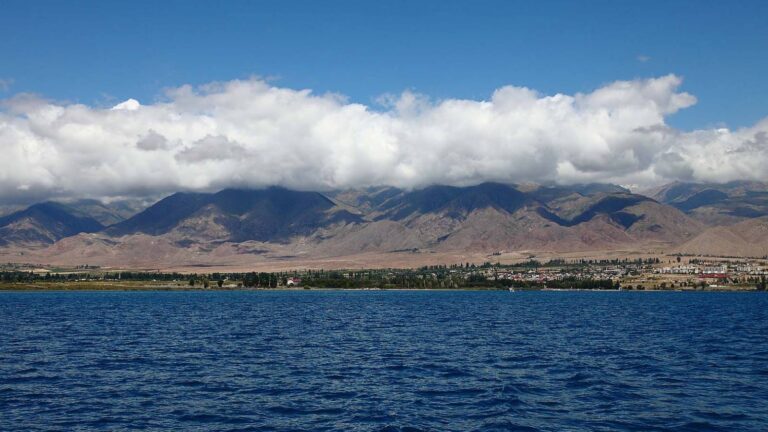Getting There
Access to the shore by vehicle or on foot is possible across most of the lake, especially from any of the tourist towns along both shores. Private taxis in all towns shuttle tourists back and forth from guesthouses to beaches to restaurants, and limited marshrutka (routed shared taxi) access exists in Cholpon-Ata and Karakol.
What to Expect
Issyk-Kul’s northern shore is known for better quality sandy beaches and more of a focus on resorts and nightlife, while the southern shore tends towards more rugged rocky beaches but also more seclusion.
Motorsports on the lake tend to be focused around Cholpon-Ata and Bosteri on the northern shore, while kayaks are available for rental in Karakol to explore the calm waters of Prezhevalsk Bay and the Karakol and Jyrgalan rivers.
In summer the southern shore village of Ton briefly becomes the centre of the lake’s party scene during the annual Kol-Fest music festival.
History
Issyk-Kul Lake has many centuries of history. It is truly known that a city was once built high in the mountains. It existed five centuries before the appearance of Jesus Christ. In the 16th century, the settlement was flooded.
For the first time Issyk-Kul was described in Chinese chronicles, that date back to the 2nd century BC. They call the lake Zhe-Hai, which literally translates as “warm sea”.
Thanks to the scientist Alexander Golubev in 1864 the exact image of the lake on the map appeared.
In 2006, a group of scientists and scuba divers explored the bottom of the lake. During the dives items, indicating the time of the death of the city, as well as various buildings were found. Currently, all artefacts are kept in the museum, and the gold bar, which served as a measure of payment, is kept in the bank of Kyrgyzstan.
The mystery of Lake Issyk-Kul will excite the minds of scientists for a long time, and there are traces of an unknown civilization dating back 2.5 thousand years on its bottom.
Facilities Available
- Tourist facilities are concentrated in Cholpon-Ata, Bokonbaevo, Karakol, and the regions surrounding each.
- Tour operators in Cholpon-Ata organise trips across the northern shore, while Destination Karakol and CBT Karakol are the best resources for the western side of the lake.
- Destination South Shore can organise adventure and cultural activities in the areas near Bokonbaevo.

